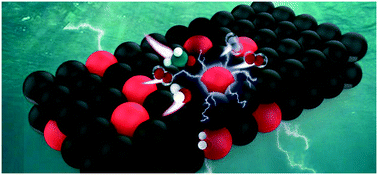In situ generated electron-deficient metallic copper as the catalytically active site for enhanced hydrogen production from alkaline formaldehyde solution†
Abstract
Low-cost copper-based catalysts have attracted great interest as they are able to accelerate hydrogen evolution from formaldehyde solution at room temperature. However, clarification of the catalytically active site and the catalytic mechanism of Cu-based catalysts for formaldehyde dehydrogenation remains a challenge. Herein, we report a rational design of a freestanding nanosized-Cu model catalyst with coexisting metallic Cu and CuO via an in situ spontaneous reduction reaction from CuO nanoparticles. Charge transfer processes among formaldehyde, Cu, and CuO during reduction result in the generation of positively charged metallic copper (Cuδ+, 0 < δ < 1), which strengthens the adsorption and activation of H2O as well as HCHO molecules. Therefore, the metallic copper coupled with a peroxide radical acts as an active phase and enables the selective cleavage of the C–H bond and the O–H bond in HCHO and H2O. As a result, the optimal turnover frequency (TOF) of the reduced CuO catalyst composed of slightly electronic-deficient Cuδ+ species reaches 7242 h−1, ∼2 times superior to its counterpart Cu catalyst. This work not only deepens our understanding on the HCHO dehydrogenation pathway over Cu-based catalysts, but also provides an alternative methodology to improve the performance of heterogeneous catalysts.



 Please wait while we load your content...
Please wait while we load your content...